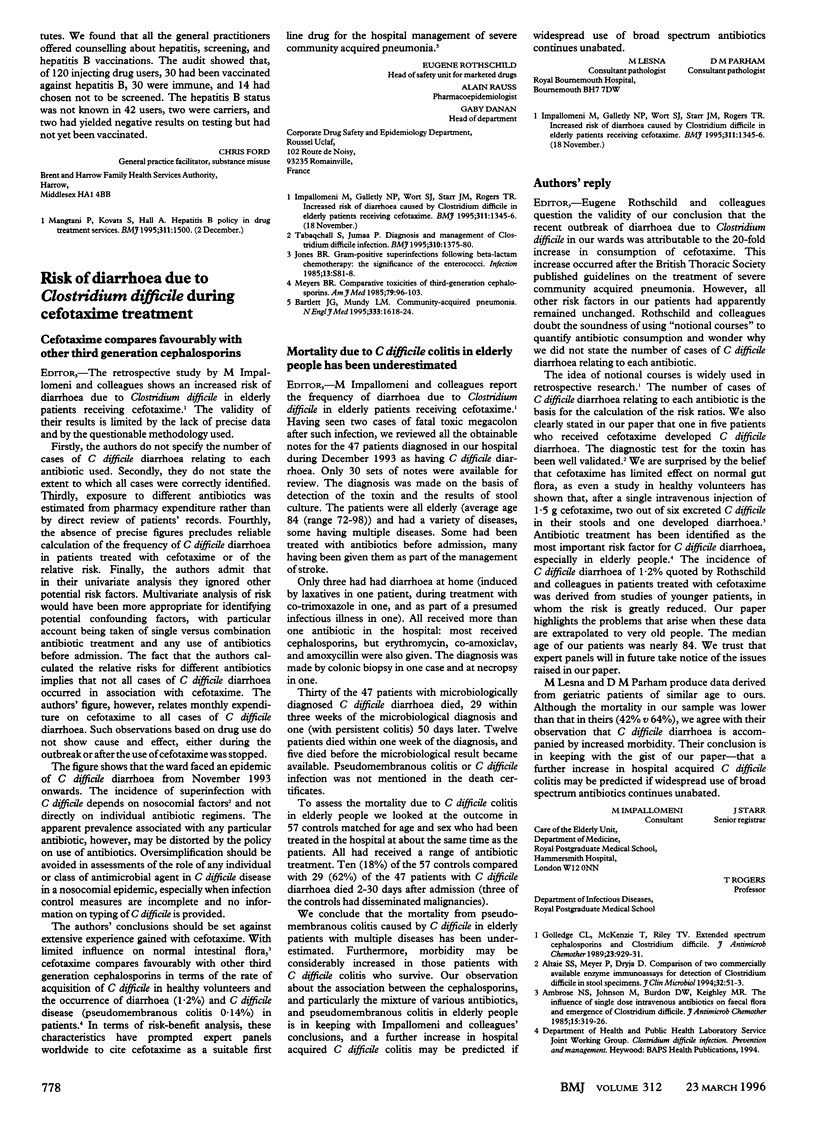Full text
PDFPage 778

Selected References
These references are in PubMed. This may not be the complete list of references from this article.
- Bartlett J. G., Mundy L. M. Community-acquired pneumonia. N Engl J Med. 1995 Dec 14;333(24):1618–1624. doi: 10.1056/NEJM199512143332408. [DOI] [PubMed] [Google Scholar]
- Impallomeni M., Galletly N. P., Wort S. J., Starr J. M., Rogers T. R. Increased risk of diarrhoea caused by Clostridium difficile in elderly patients receiving cefotaxime. BMJ. 1995 Nov 18;311(7016):1345–1346. doi: 10.1136/bmj.311.7016.1345. [DOI] [PMC free article] [PubMed] [Google Scholar]
- Jones R. N. Gram-positive superinfections following beta-lactam chemotherapy: the significance of the enterococcus. Infection. 1985;13 (Suppl 1):S81–S88. doi: 10.1007/BF01644225. [DOI] [PubMed] [Google Scholar]
- Meyers B. R. Comparative toxicities of third-generation cephalosporins. Am J Med. 1985 Aug 9;79(2A):96–103. doi: 10.1016/0002-9343(85)90268-2. [DOI] [PubMed] [Google Scholar]
- Tabaqchali S., Jumaa P. Diagnosis and management of Clostridium difficile infection. BMJ. 1995 May 27;310(6991):1375–1380. doi: 10.1136/bmj.310.6991.1375. [DOI] [PMC free article] [PubMed] [Google Scholar]


